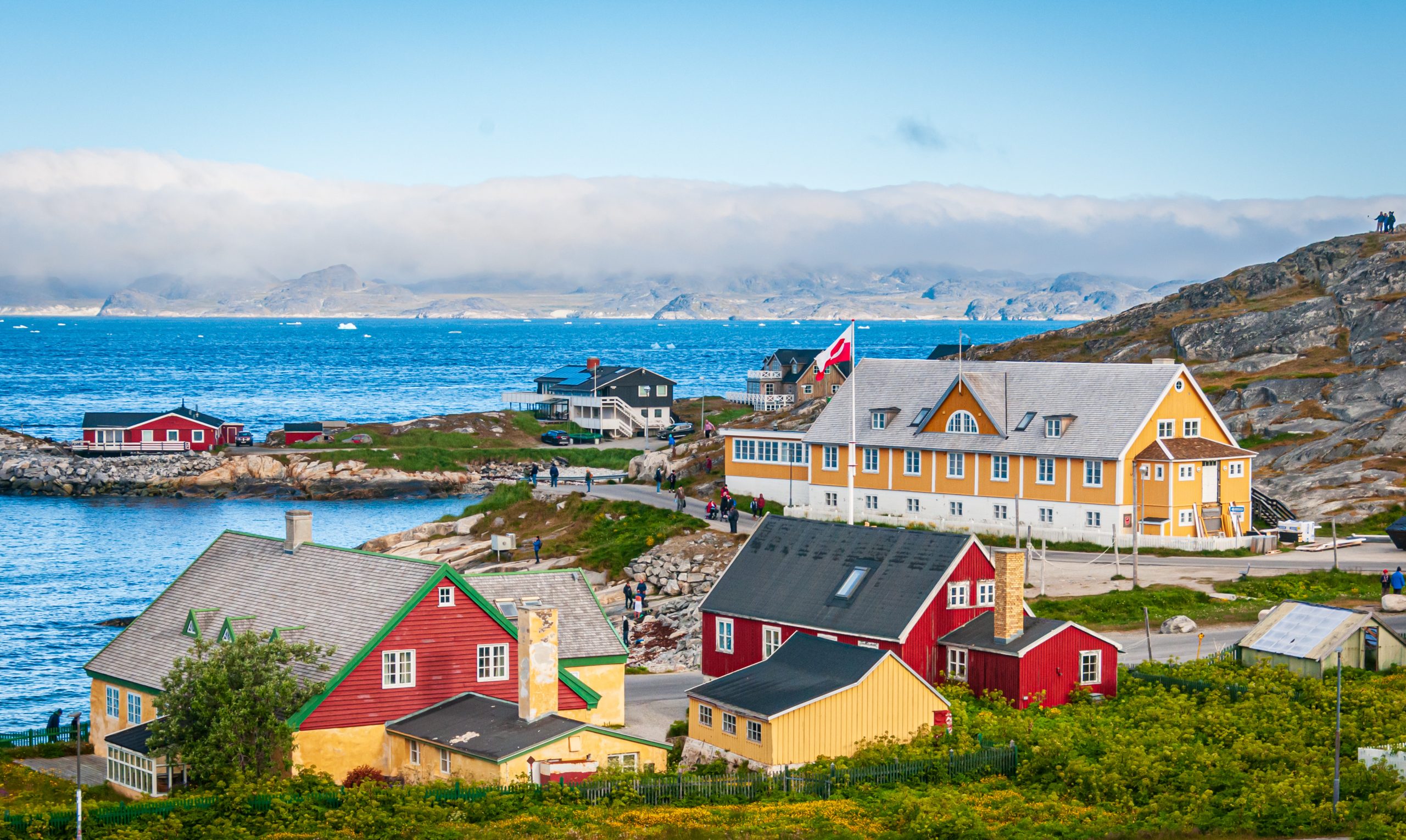Climate Change Forces French Vineyards to Alter the Way They Make Wine
Growers change grape varieties and reshape the landscape to protect some of the world’s most valuable vineyards from warmer temperatures
BORDEAUX, France—The wildfire began on an usually dry summer day in a forest bordering the Liber Pater vineyard. Winemaker Loïc Pasquet saw the flames rise and spread toward his precious vines, which produce Bordeaux that sells for $30,000 a bottle.
Hours before evacuating Mr. Pasquet and his staff destroyed the grass around the vineyard to prevent it from catching fire and dug trenches to block the blaze’s path. He also sprayed local trees with water drawn from the vineyard’s ponds. The vineyard was spared.
The emergency measures are just some of the steps winegrowers are taking to survive in a region that is home to some of the world’s finest wines and sharpest temperature increases. Many growers are harvesting weeks before grapes traditionally ripen; others are investing in land located in cooler climates. Some are transforming the landscape of wine country itself, planting more trees to ensure better water retention, and less erosion and runoff after heavy rain.
The situation has become so dire that winemakers in Bordeaux and other regions have begun to change practices that have been in place for generations. Winemaking is tightly regulated in France with rules governing everything from the location of specific appellation to its grape content.
This year vineyards around Bordeaux were allowed to irrigate their vines, a practice that is usually forbidden. The French organization that governs wine appellations also recently approved six more grape varieties to be added to the grapes currently allowed for the production of Bordeaux wines. The new additions include four reds—Arinarnoa, Castets, Marselan, and Touriga Nacional—and two whites, Alvarinho and Liliorila. All were chosen for their ability to thrive in warmer, drier conditions.
“It was crazy,” said Georgie Hindle, a wine expert who covers the Bordeaux region at wine publication Decanter. “No one knows if this decision will change the profile of a classic claret.”
In February, United Nations climate scientists published a report stating that surface temperatures in the Mediterranean region—which includes Southern France—have already risen 1.5 degrees since the preindustrial era. That is higher than the average increase of 1.1 degrees for the entire planet, according to the U.N., exposing the region to higher risk of heat waves, droughts and other extreme weather events.
Wine grapes are highly sensitive to changes in the climate. Sunshine warms and ripens the grapes, producing sugar that converts to alcohol. Too much sun risks burning the grapes. It also heightens the alcohol levels, leaving the wine unbalanced and giving its fruity notes the taste of jam.
Wine connoisseurs say the best wines are produced at the northern limit of where the grape is a viable crop, giving the fruit time to mature and for complex flavours to develop. A handful of small growers have begun investing in land in areas that were once regarded as too blustery for vineyards, including Brittany and Normandy along France’s Atlantic coast. But established châteaux say relocating production to different regions is problematic. Regulations require growers to label their bottles according to the appellations or areas where they are produced. That means authentic Bordeaux wines cannot be produced outside the swath of terroir, or specific soil, that surrounds rivers that feed the Gironde estuary in Southwestern France.
“We’re talking here about making fine wine,” says Mr. Pasquet. “You can make wine anywhere in the world—but a number of precise details go into making fine wine.”
This year unusually warm spells in some places in March caused early budding of the vines, leaving them vulnerable to a wave of late frost in April. Growers installed massive candles throughout their vineyards to warm their fruit and used helicopters to disperse stagnant air.
Then came the summer drought, which forced much of France to undertake water restrictions as rivers up and down the country ran dry.
On average, grape harvests now happen up to three weeks earlier than they did 30 years ago, according to winemakers’ unions. This year winegrowers in the prized Languedoc-Roussillon area started the harvest period at the end of July while in parts of Corsica it began in early August—both several weeks early.
“We started in August. That’s never happened before,” said Pierre-Olivier Clouet, technical director of Château Cheval Blanc in the Bordeaux area.
Cheval Blanc has responded by moving into agroforestry, planting hundreds of trees among the vines—a technique borrowed from the history books. Mr. Clouet said the trees provide shade, improve soil quality and allow the vines to suck up more water. A flock of sheep now roams among the vines, fertilising the soil, while a new artificial lake on the property adds moisture.
In the region of Isère, winegrower Nicolas Gonin said his decision to uproot the Pinot Noir and Chardonnay vines planted decades ago and replace them with local varieties was vindicated this year. “It is better to increase the number of grapes that you grow,” he said. “They have different characteristics, and when one has a tough year, the others can do well.”
Many of the changes are still experimental. Some growers are modifying the density of their plots to require less water while others are collecting rainwater during the winter to boost their irrigation systems. Planting vines at a different angle, some say, can reduce their exposure to punishing sunlight. Many growers are also planting vine roots that are more resistant to drought and delay the maturity of the fruit.
In cooler times, growers used to cut the leaves of their vines so they would get the maximum amount of sun and more alcohol content. Now the leaves go untouched to better protect the grapes, preserving the fruit’s acidity. One grower said he uses machines that draw alcohol out of his wine so that it isn’t too strong.
Some winemakers, including in Champagne, in the North of France, say it has still been an excellent year. Younger vines have struggled, but the older plants with long roots have performed well, producing small grapes with thick skins that contribute flavour and colour to the wines as well as staving off diseases such as mildew.
“For now the impact of global warming, we feel it—but it’s not yet a negative impact,” said Brigitte Bâtonnet, of Champagne producers’ group CIVC.
 Copyright 2020, Dow Jones & Company, Inc. All Rights Reserved Worldwide. LEARN MORE
Copyright 2020, Dow Jones & Company, Inc. All Rights Reserved Worldwide. LEARN MORE
This stylish family home combines a classic palette and finishes with a flexible floorplan
Just 55 minutes from Sydney, make this your creative getaway located in the majestic Hawkesbury region.
The remote northern island wants more visitors: ‘It’s the rumbling before the herd is coming,’ one hotel manager says
As European hot spots become overcrowded , travellers are digging deeper to find those less-populated but still brag-worthy locations. Greenland, moving up the list, is bracing for its new popularity.
Aria Varasteh has been to 69 countries, including almost all of Europe. He now wants to visit more remote places and avoid spots swarmed by tourists—starting with Greenland.
“I want a taste of something different,” said the 34-year-old founder of a consulting firm serving clients in the Washington, D.C., area.
He originally planned to go to Nuuk, the island’s capital, this fall via out-of-the-way connections, given there wasn’t a nonstop flight from the U.S. But this month United Airlines announced a nonstop, four-hour flight from Newark Liberty International Airport in New Jersey to Nuuk. The route, beginning next summer, is a first for a U.S. airline, according to Greenland tourism officials.
It marks a significant milestone in the territory’s push for more international visitors. Airlines ran flights with a combined 55,000 seats to Greenland from April to August of this year, says Jens Lauridsen, chief executive officer of Greenland Airports. That figure will nearly double next year in the same period, he says, to about 105,000 seats.
The possible coming surge of travellers also presents a challenge for a vast island of 56,000 people as nearby destinations from Iceland to Spain grapple with the consequences of over tourism.
Greenlandic officials say they have watched closely and made deliberate efforts to slowly scale up their plans for visitors. An investment north of $700 million will yield three new airports, the first of which will open next month in Nuuk.
“It’s the rumbling before the herd is coming,” says Mads Mitchell, general manager of Hotel Nordbo, a 67-room property in Nuuk. The owner of his property is considering adding 50 more rooms to meet demand in the coming years.
Mitchell has recently met with travel agents from Brooklyn, N.Y., South Korea and China. He says he welcomes new tourists, but fears tourism will grow too quickly.
“Like in Barcelona, you get tired of tourists, because it’s too much and it pushes out the locals, that is my concern,” he says. “So it’s finding this balance of like showing the love for Greenland and showing the amazing possibilities, but not getting too much too fast.”
Greenland’s buildup
Greenland is an autonomous territory of Denmark more than three times the size of Texas. Tourists travel by boat or small aircraft when venturing to different regions—virtually no roads connect towns or settlements.
Greenland decided to invest in airport infrastructure in 2018 as part of an effort to expand tourism and its role in the economy, which is largely dependent on fishing and subsidies from Denmark. In the coming years, airports in Ilulissat and Qaqortoq, areas known for their scenic fjords, will open.
One narrow-body flight, like what United plans, will generate $200,000 in spending, including hotels, tours and other purchases, Lauridsen says. He calls it a “very significant economic impact.”
In 2023, foreign tourism brought a total of over $270 million to Greenland’s economy, according to Visit Greenland, the tourism and marketing arm owned by the government. Expedition cruises visit the territory, as well as adventure tours.
United will fly twice weekly to Nuuk on its 737 MAX 8, which will seat 166 passengers, starting in June .
“We look for new destinations, we look for hot destinations and destinations, most importantly, we can make money in,” Andrew Nocella , United’s chief commercial officer, said in the company’s earnings call earlier in October.
On the runway
Greenland has looked to nearby Iceland to learn from its experiences with tourism, says Air Greenland Group CEO Jacob Nitter Sørensen. Tiny Iceland still has about seven times the population of its western neighbour.
Nuuk’s new airport will become the new trans-Atlantic hub for Air Greenland, the national carrier. It flies to 14 airports and 46 heliports across the territory.
“Of course, there are discussions about avoiding mass tourism. But right now, I think there is a natural limit in terms of the receiving capacity,” Nitter says.
Air Greenland doesn’t fly nonstop from the U.S. because there isn’t currently enough space to accommodate all travellers in hotels, Nitter says. Air Greenland is building a new hotel in Ilulissat to increase capacity when the airport opens.
Nuuk has just over 550 hotel rooms, according to government documents. A tourism analysis published by Visit Greenland predicts there could be a shortage in rooms beginning in 2027. Most U.S. visitors will stay four to 10 nights, according to traveler sentiment data from Visit Greenland.
As travel picks up, visitors should expect more changes. Officials expect to pass new legislation that would further regulate tourism in time for the 2025 season. Rules on zoning would give local communities the power to limit tourism when needed, says Naaja H. Nathanielsen, minister for business, trade, raw materials, justice and gender equality.
Areas in a so-called red zone would ban tour operators. In northern Greenland, traditional hunting takes place at certain times of year and requires silence, which doesn’t work with cruise ships coming in, Nathanielsen says.
Part of the proposal would require tour operators to be locally based to ensure they pay taxes in Greenland and so that tourists receive local knowledge of the culture. Nathanielsen also plans to introduce a proposal to govern cruise tourism to ensure more travelers stay and eat locally, rather than just walk around for a few hours and grab a cup of coffee, she says.
Public sentiment has remained in favour of tourism as visitor arrivals have increased, Nathanielsen says.
—Roshan Fernandez contributed to this article.
This stylish family home combines a classic palette and finishes with a flexible floorplan
Just 55 minutes from Sydney, make this your creative getaway located in the majestic Hawkesbury region.






















